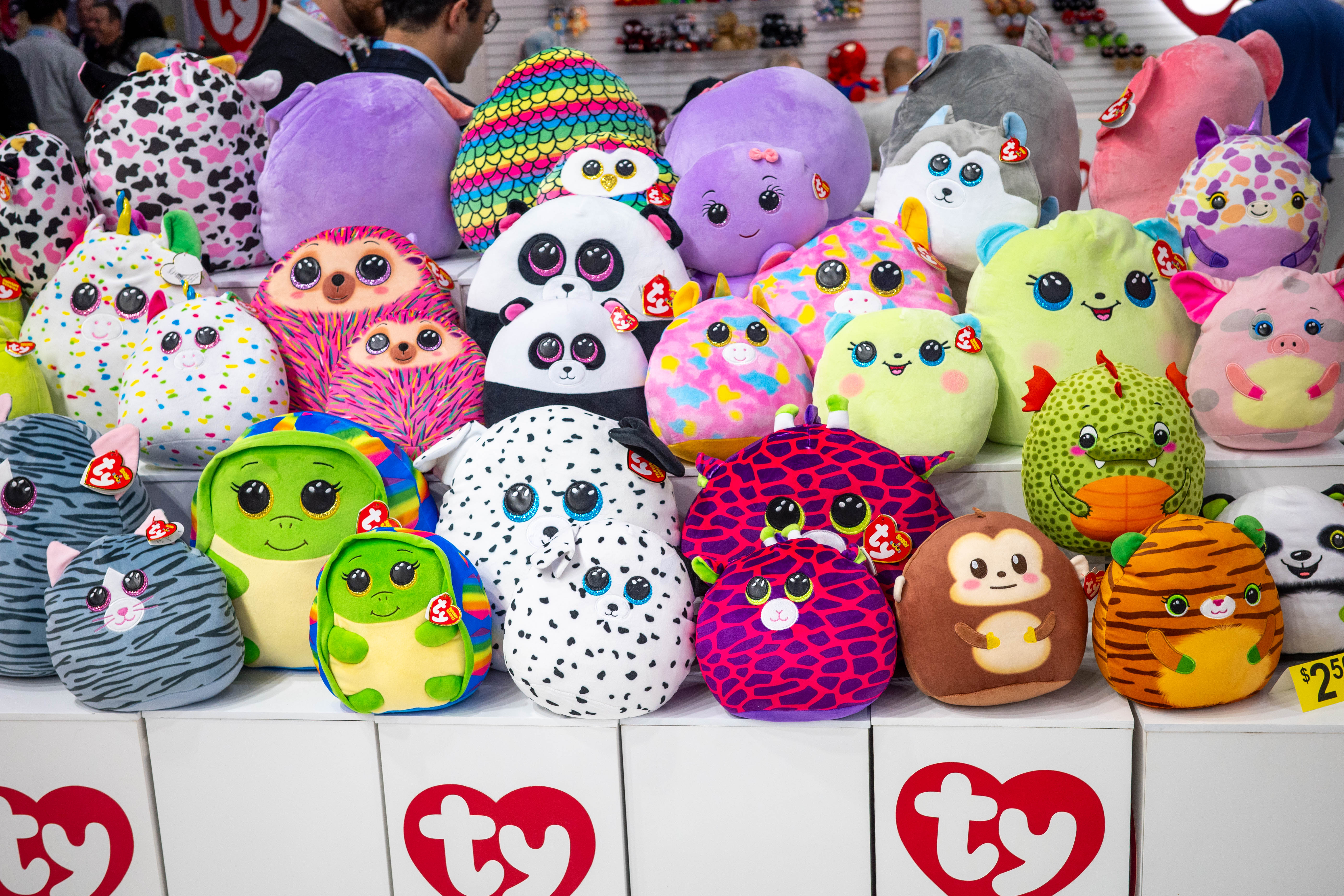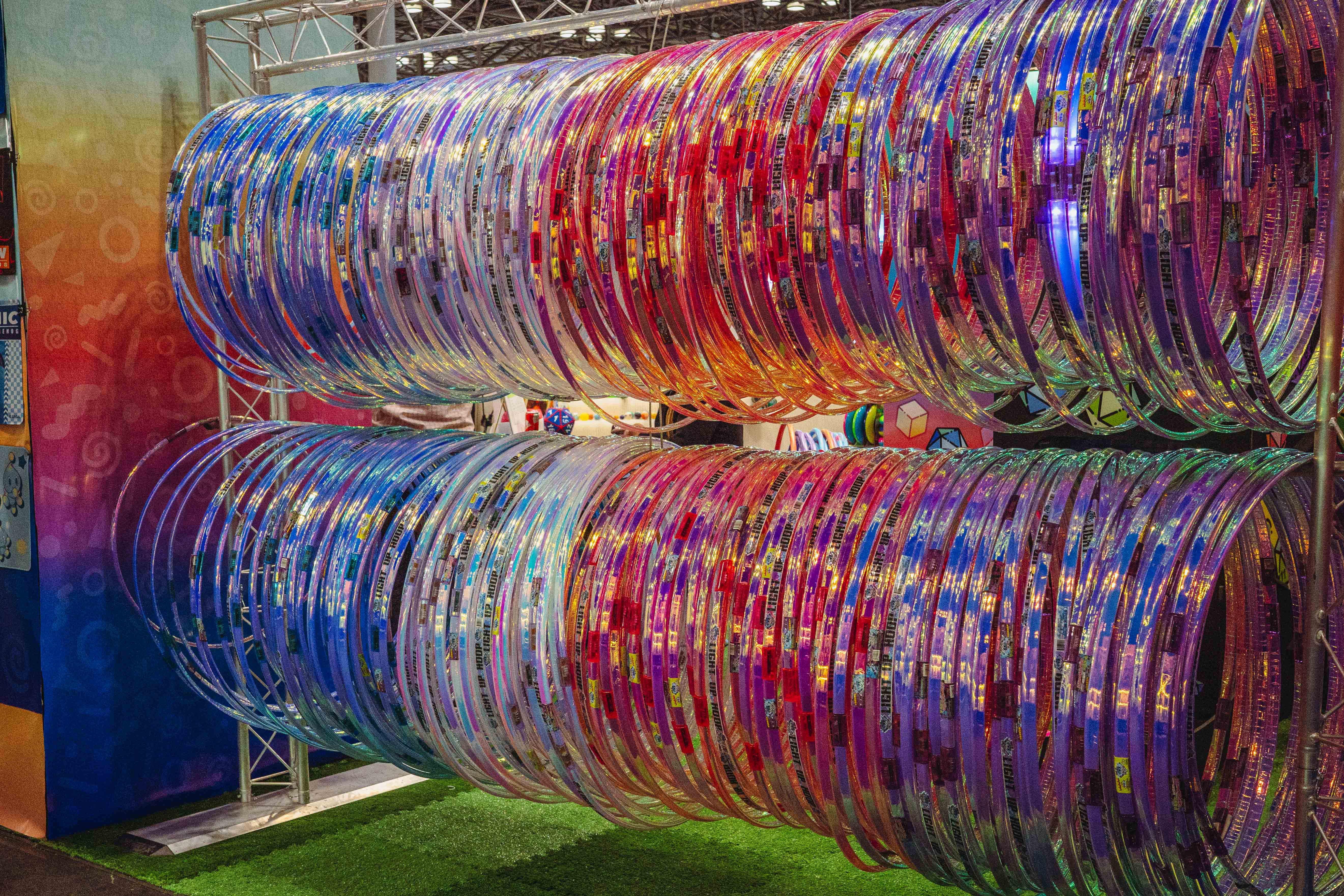I just got back from New York, where I was attending the annual Toy Fair. The fair was an extravaganza of my favorite childhood action figures and video game worlds come to life. Last year, there was a 20-foot-wide floating Pikachu in the convention center. Leading up to this year’s, I was hoping Pikachu would be back. He was.
The fair is an unusual, even disorienting, environment to be inside of. On the surface, it appears to be about toys–pretty cool. But really it’s about the business of toys. The big bosses from all the major brands are showing off their latest and greatest, cutting deals with the also-big retail bosses. There aren’t any kids there, actually. The average age of attendees is about 50. So the fair ends up as a surreal combination of two worlds mashed together: children’s toys and corporate sales.
The business people aren’t necessarily my type. They talk in a scripted and transactional way. Everyone basically knows their “new product” is a repackaging of something that’s been done fifty times before (e.g. stuffed animals), but they present it as if it’s never been seen. Without any kids around, the whole presentation and celebration of toys starts to feel like theater for no audience.
Meanwhile, the thousands of toys inside the convention center are like a hyperstimulus. Everything is technicolor and otherworldly. You’re being stared at by hundreds of inanimate objects—dolls, Pokémon, action figures—all making eye contact with you at once. Their faces have a lot of uncanny valley energy.
A distinct “Oh yeah, no one knows what they’re doing and everyone is just winging it all the time” moment happened during a panel discussion called The Impact of TikTok on the Toy Industry. Yeah, who better to offer insights on social media than a group of boomers from Lincoln, Nebraska?
Here are some random observations from the floor.
I’m personally captivated by the category of slime and squish toys—the kind where a chicken is made of slime, and you can squeeze it and it returns to its shape. They’re so cool. The ASMR effect is amazing.
I’ve noticed I really enjoy tactile experiences—the touch and feel of things—so it makes sense that these toys catch my attention. My Instagram algorithm figured this out about me recently. So if you’re wondering what I’m getting up to at 10pm on a Wednesday night, it’s probably laying in bed watching ASMR squish toy videos on Reels. Maybe I’ll list that as a hobby on my Raya profile.
On the first day of the fair, the guy I work with and I stumbled into one of the big slime toy display booths. We randomly walked up to a large plastic container full of rubber ducklings. We nudged the container slightly, and all the ducks jiggled in a subtle and synchronous way. We were entranced. We kept doing it for three whole minutes—just gently shifting the container to watch the ducklings jiggle. I wanted to keep doing it, but we had to go. That was the most interesting thing I saw at the fair this year.
The Lego booth was, in fact, not a booth, but a garden—the Lego Garden, they called it. It was a walkable display of Lego’s super popular flower kits, arranged in bouquets. I’d been hearing how popular Lego Flowers are, but remained skeptical. In my head, there was a fundamental incompatibility between Legos being mechanical and flowers being ornate. But seeing them in person, they were way more compelling than I expected. The attention to detail is impressive.
Lego is a super interesting toy company. They make great toys. But they’re also unique in that their business is growing–dramatically—while the rest of the toy industry is shrinking. A lot of the growth comes from adults still buying Lego. Most toy companies are running in place, selling to kids who age out of products every year. But adults keep buying Lego. The Flowers are a part of that—there’s a whole economy of adults buying Lego Flowers, often as gifts. That seems rad. (This is all public information, by the way, not anything I got from private sources.)
Lego was a big part of my childhood. It’s possible I might not have caught the Maker bug without them. Definitely a special thing for me. Meanwhile I also feel sort of blessed that I didn’t get hooked and am not trying to build contraptions with Lego as an adult. People, and even kids, should move onto making real things, in my opinion.
There is a new “bath bomb” trend in toys happening. Water, itself, is a toy, basically, and “surprise effects” are trending in toys these days, so bath bombs make sense. The playability is: you put the toy bath bomb in the water, it dissolves, some reaction happens with the water, and then a surprise is revealed. An indication of how popular this category is nowadays is that I saw several aisles of bath bomb toys when I was in Tokyo, in a camera store, of all places—not even a toy store.
At the fair we talked to some people at Bandai, the big Japanese toy maker. They pointed out a Jaws-themed bath bomb toy as one of their favorites. Pretty cool. You put the toy in the bath and, as it dissolves, it turns the water red, and a shark toy floats to the surface and breaches the water. Wow?
One of the weird charms of Japanese toys is that you sometimes can’t tell if they’re for kids or grown adults. Like, I didn’t see Hasbro advertising “scenes of shark carnage” as a feature in their upcoming spring lineup. My friend in Japan pointed out that Tamagotchi was the first mainstream toy where your character dies and never comes back—and that this is very Japanese. It’s like an early lesson in grief. It really was sad, by the way, to find your Tamagotchi had passed.
The fair was altogether fun and surreal. I look forward to going to the one again next year. I hope they keep doing the big Pikachu.




















